Owning chickens is a delightful hobby, but they still take up a fair amount of room and resources despite low-maintenance birds.
If you want to start a flock of your own but are working with limited space, why not consider one (or a few) of these great small chicken breeds?
All of the handsome chickens listed below are among the smallest, cutest, and friendliest around, and they all make excellent pets for hobby farmers.
Even though their eggs are smaller than those of heftier breeds, they’re still delicious and plentiful!
Table of Contents
ToggleSilkie
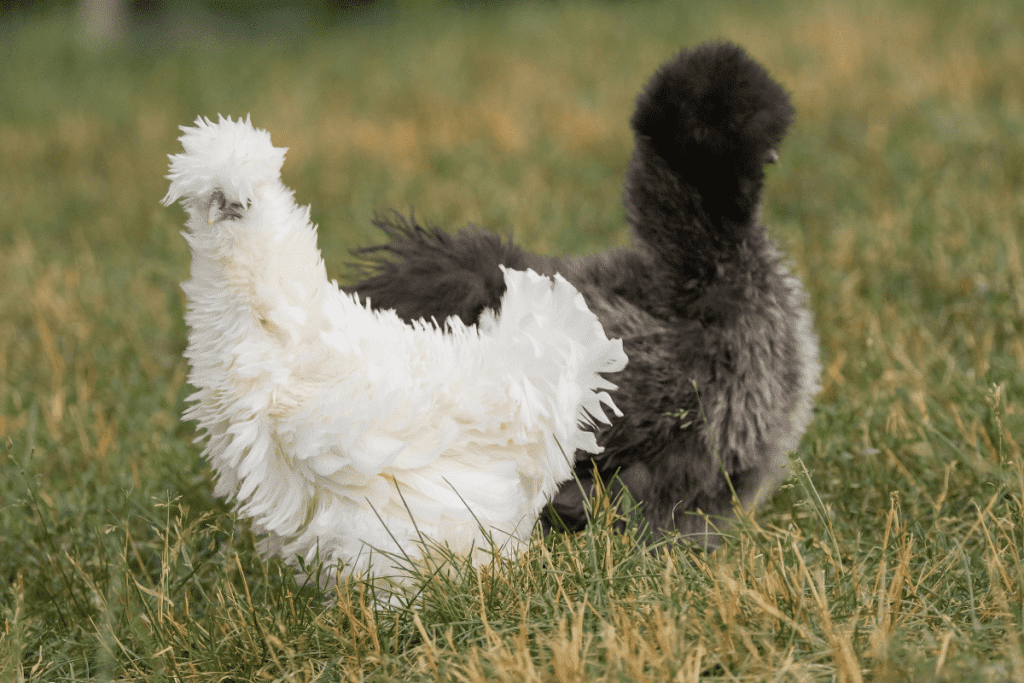
The Silkie is already one of the most well-known chicken breeds for its adorably fluffy, silky-smooth plumage, but it’s also a convenient breed to own, thanks to its small size!
The typical Silkie maxes out at only around two pounds, with roosters occasionally reaching three pounds at most.
These birds typically have grey or black skin, and their plumage exists in a few different colors, mainly black, brown, and classic white.
Though they look like something from an alien planet, Silkies are a possibly ancient chicken breed originating in China.
Their history isn’t well-documented, but historians believe they’ve been around since the 1200s!
Famed Venetian explorer Marco Polo even mentioned these “furry chickens” in his journals while traveling across Asia.
Contrary to popular belief, Silkies are not “furry” and are feathered, just like all other chickens.
However, their fluffy feathers lack the typical connective barbicels giving feathers their usual, more rigid, and defined structure.
As a result, the birds’ feathers are lightweight, wispy, and downy, giving them an ultra-soft feel and a delightfully amusing appearance.
Their mop of feathers atop their heads sometimes will even obscure their vision, which sometimes makes Silkies slightly skittish and nervous towards their owners at first.
Despite this, they are intelligent and friendly, if somewhat shy, backyard chickens.
Other notable traits include their highly broody nature and decent egg-laying abilities.
This means they breed extremely well in captivity and lay lots of eggs, so you’ll be able to easily produce more of them once you inevitably fall in love with their uniqueness, too!
Related: Why do Silkie chickens fight?
Brahma Bantam
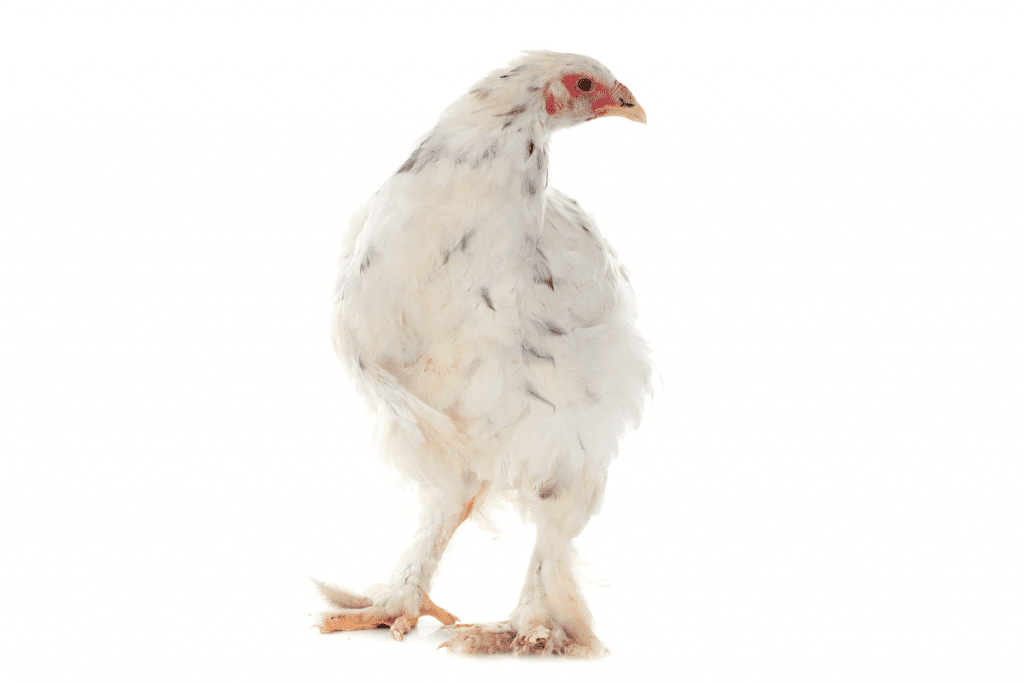
Did you know Brahma chickens even existed in bantam form?
Although typical Brahmas are mainly known for their large size, feathered legs, and tasty meat, they have also been selectively bred to produce a much smaller bantam variety.
Bantam Brahmas typically weigh around 2 to 3 pounds and stand at only about 4 to 6″ inches in height–a far cry from the usual 10-pound Brahma from which they originated!
These birds are also native to China, specifically Shanghai, and have existed since at least the early 1800s.
Originally, they were known as “Shanghai chickens,” but their official name was changed in 1852 by a group of esteemed poultry judges in Boston, Massachusetts.
Over time, the name “Brahmapootra” became shortened to simply “Brahma.”
Brahma bantams exist in various colors and feather patterns, but the classic buff Brahma bantam is the most popular variety.
Their bodies are round, and they retain the densely feathered legs of their much larger ancestors.
As far as their temperament goes, they typically have a calm disposition and are good egg layers and sitters.
Related: Are Brahma chickens aggressive?
Sebright
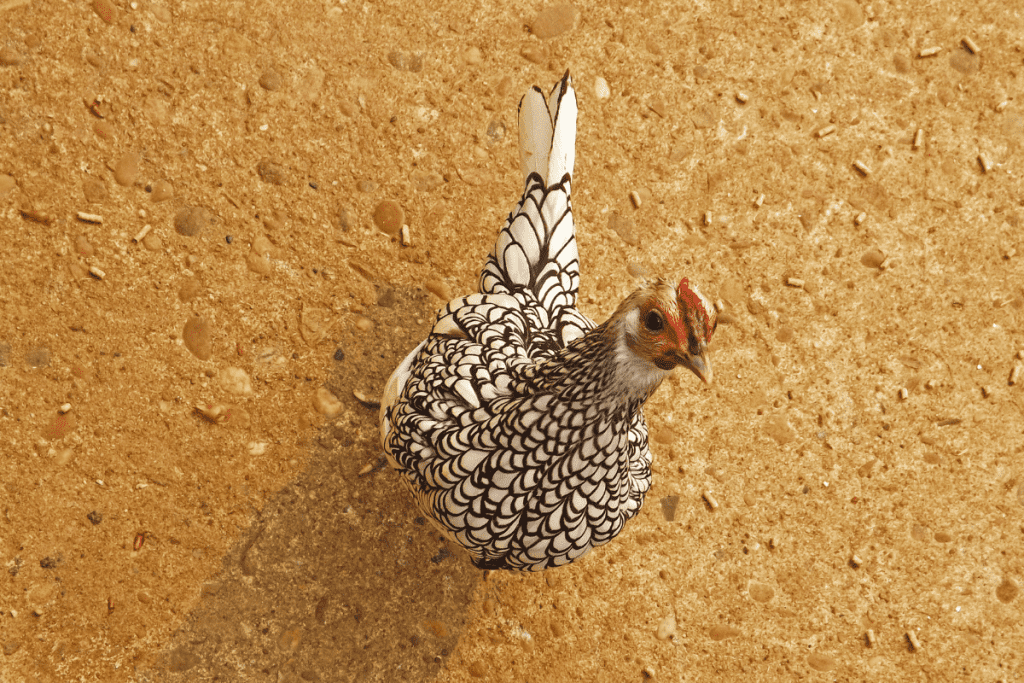
This British breed is among the smallest in the world, with adult birds weighing in at only around 1 to 2 pounds and standing at only about 6″ inches tall.
These beautiful birds are slender with a tall, proud posture, accentuating their prominent tail feathers and downward-pointing wings.
The Sebright is named after Sir John Saunders Sebright, an English politician, and agriculturalist who created the breed via careful selective breeding in the early 1800s.
Sebright also created the first chicken association dedicated to a singular breed, The Sebright Bantam Club, soon after in 1810.
To this day, nobody knows exactly which breeds Sir John Saunders Sebright crossbred to create the Sebright breed, but the Nankin and Old English Game breeds are theorized to have been involved.
Over time, the Sebright became a popular show breed of chicken for its unique appearance and small, lightweight size.
It’s now one of the most well-known bantam breeds globally and is an excellent choice for any small-breed backyard flock.
Even though they aren’t great layers or sitters and produce very few, tiny eggs, Sebrights are exceptionally hardy for their size and are highly active, social, and intelligent birds.
Serama
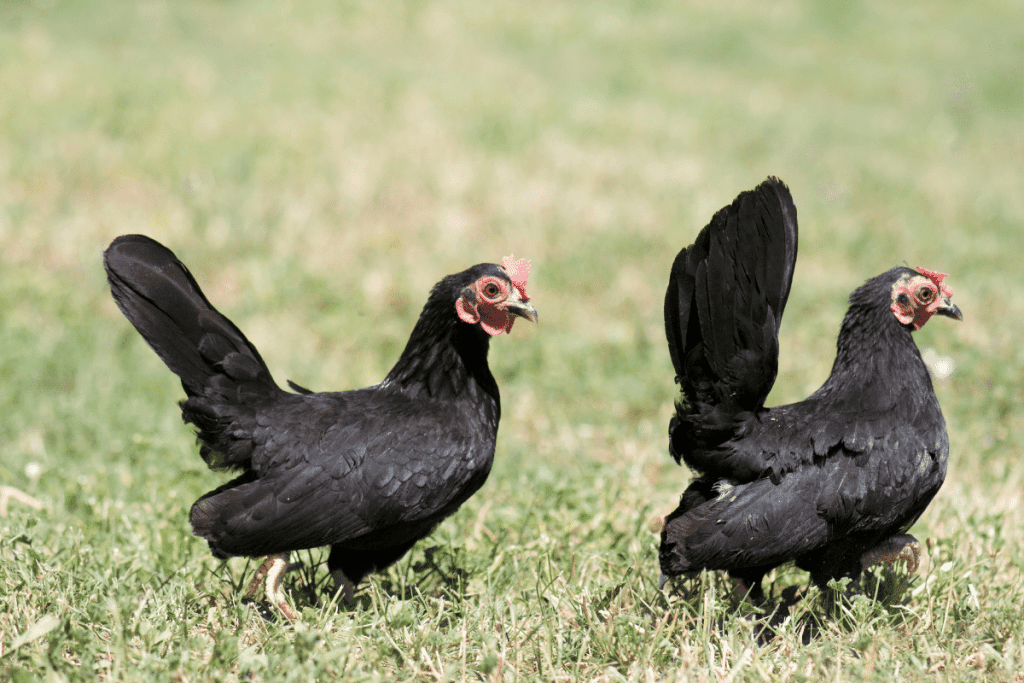
Native to Malaysia, the Serama is the smallest chicken breed globally.
Its tiny size and adorably upright, confident-looking posture make it an ideal contender for this list.
In Malaysia, common nicknames for this miniature chicken are “warrior birds” and “archangel chickens,” with both monikers nodding to the chickens’ proud, tall stance.
According to the breed standard, most Serama chickens weigh less than a pound and stand only 6-10″ inches tall.
Despite their humorously upright, haughtily puffed-out chests, they are incredibly docile, calm, and agreeable birds.
Though they don’t breed easily and aren’t incredibly prolific layers, they are hardy for their small size and get along well with most hobby farmers’ flocks.
If you’re willing to do a bit of extra searching for a rarer breed and perhaps invest a bit more money than you’re used to on chickens, Seramas are quirky, petite, and, most importantly, cute birds you’ll love having around the coop.
Interestingly, they’re also one of the newer types of ornamental chickens on this list, having only been developed in the latter half of the 20th century.
Pekin
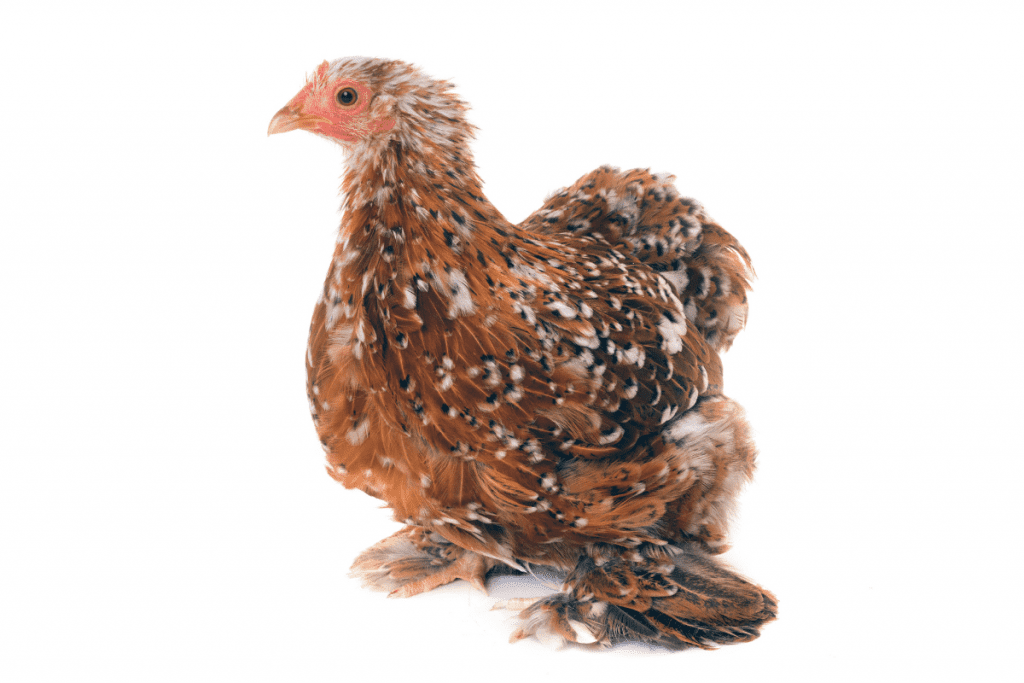
The Pekin chicken has both British and Chinese origins.
Their history isn’t well-documented, but the breed was likely first developed in the UK from birds brought over from China in the mid-1800s.
While most bantam breeds were selectively bred from a larger variety, the Pekin is a true bantam.
The original Pekin chickens were buff-colored, but many colors and plumage patterns exist today.
The breed is now known for its small size and heavily feathered legs and feet.
Typical full-sized adult birds weigh only around 1.5 to 2 pounds and have round, densely feathered, short bodies, giving them a cute, fluffy, and diminutive appearance.
While Pekin roosters are occasionally territorial and protective of their mates, they are overall calm and gentle birds.
They are very handleable and easily socialized and thrive in large groups of other similarly-sized chickens.
In terms of egg production, the hens are infrequent layers of small eggs, but they are excellent sitters and breed well in captivity.
As with many breeds with heavily feathered legs, Pekins often need the feathers around their feet to be cleaned and carefully maintained to prevent infections.
Other than this, though, they are low-maintenance, hardy in warm and cold climates, and healthy, active birds overall.
Related: What Do Pekin Chickens Start Laying Eggs?
Bantam Frizzle
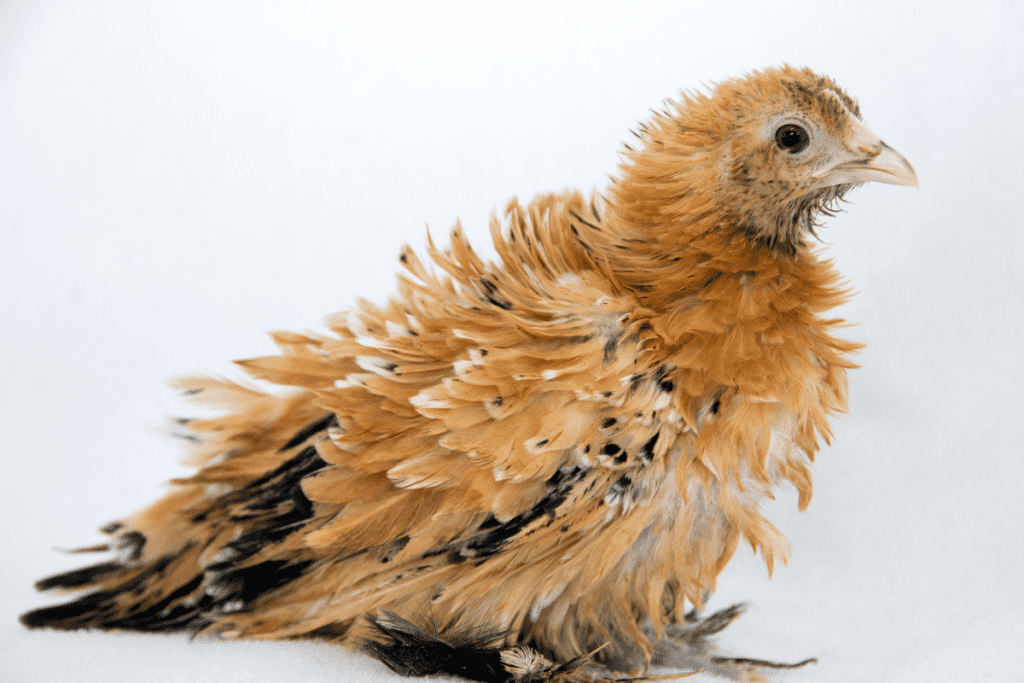
While typical Frizzle chickens aren’t large birds, their bantam variety is tiny and adorable!
Weighing in at only around 1.5 to 2 pounds, bantam size Frizzles are small in stature but huge in plumage and personality.
As far as ornamental breeds go, few are more unique than these incredible birds.
Interestingly, the specific gene for frizzled plumage exists in many already-established chicken breeds.
Still, it is also typical for other ornamental birds with this plumage type to be considered a distinct breed.
Seeing a Frizzle for the first time is likely amusing and confusing for those who aren’t already familiar with these particular birds.
This is mainly thanks to the Frizzle’s prominently outward-curling feathers, making it look impossibly fluffy, almost like the Silkie mentioned earlier in this list.
Both Frizzles and their bantam variety exist in many colors, but the bizarrely structured feathering is a trait every Frizzle shares.
The trait is most likely due to a genetic mutation within one of the birds’ keratin genes.
The breed’s history is mostly unknown, but they likely originated somewhere in East Asia sometime in the 1700s.
Today, Frizzles are wildly popular, mainly amongst hobby farmers and backyard chicken keepers.
Even though (like most smaller breeds) the Frizzle bantam’s eggs are small, they are notably good layers and sitters, so they breed quite well in captivity in various climates.
Their broodiness and prolific egg-laying are also likely part of why the adorable frizzled plumage trait has been so easily integrated into many other breeds.
Dutch Booted Bantam

This European chicken breed is named for its densely feathered feet and legs, making it look like it’s always wearing fluffy boots!
These little birds max out at just under two pounds, and they are true bantams, meaning there is no larger variety.
Their Dutch name, Sabelpoot, translates to “saber-legged,” referring to the chickens’ long, saber-like feathers cascading down their legs.
Combined with their upright posture and tall, prominent tail feathers, booted bantams certainly have a commanding–albeit also charming and non-threatening in appearance.
Like many older breeds, the Dutch booted bantam’s history is long, confusing, and not very well-recorded.
They have existed since the 1700s and have been around in the United States since the early 19th century.
They exist in various colors, including several exceedingly handsome varieties like lavender, mottled, cuckoo, and porcelain.
The booted bantam is an excellent choice if you’re looking for a breed with beautiful plumage!
Like all the other breeds on this list, Dutch booted bantams lay small eggs.
However, they are reliable layers and decent sitters, and they are especially popular as show chickens.
They breed fairly easily in captivity, which has led to many farmers crossbreeding them with other breeds to create new varieties like the Barbu d’Uccle (another breed on this list below)!
Barbu d’Uccle
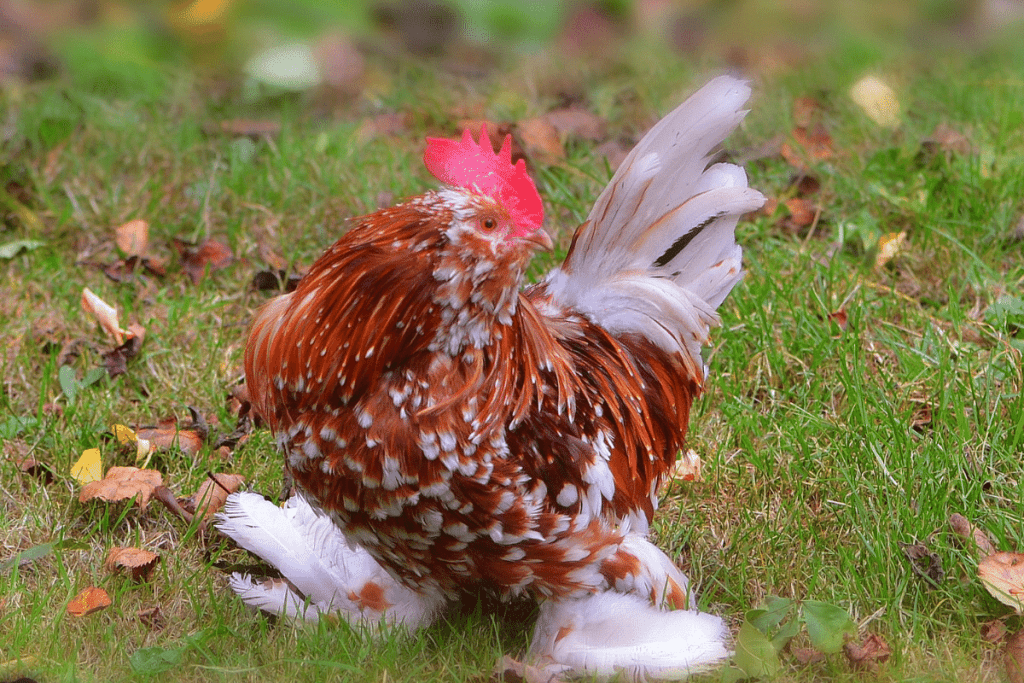
These true bantam chickens are tiny birds, but they will undoubtedly stand out in any flock with their fluffy beards, cheeks, and feathered legs!
Also known as the Belgian d’Uccle, the breed originated just outside of Brussels, Belgium, in the town of Uccle.
Essentially, their name translates to “Belgian (Chicken) of Uccle.”
The average Barbu d’Uccle chicken weighs only around 1 to 1.5 pounds and stands only about 6″ inches tall, making them an excellent small breed perfect for any hobbyist with limited space for their flock.
Another great feature of this healthy breed is it exists in a whopping 28 color variants, ranging from simple black, silver, and white to far more ornate shades and patterns like lavender, blue quail, and millefleur.
As we touched on above, these cute little birds originated in the small town of Uccle, Belgium, in the early 1900s.
Most historians believe the breed was developed via the crossbreeding of Dutch booted bantam and Barbu d’Anvers chickens.
After its development, the breed was soon exported to the UK in 1911 and, eventually, to the US by the 1920s.
Regardless of what other breeds you’ve got running about in your flock, the Barbu d’Uccle is always a good addition.
Both hens and roosters of the breed are calm, friendly, and not particularly boisterous or noisy as domestic chickens, though specific personalities will always vary slightly amongst individual birds.
Sultan
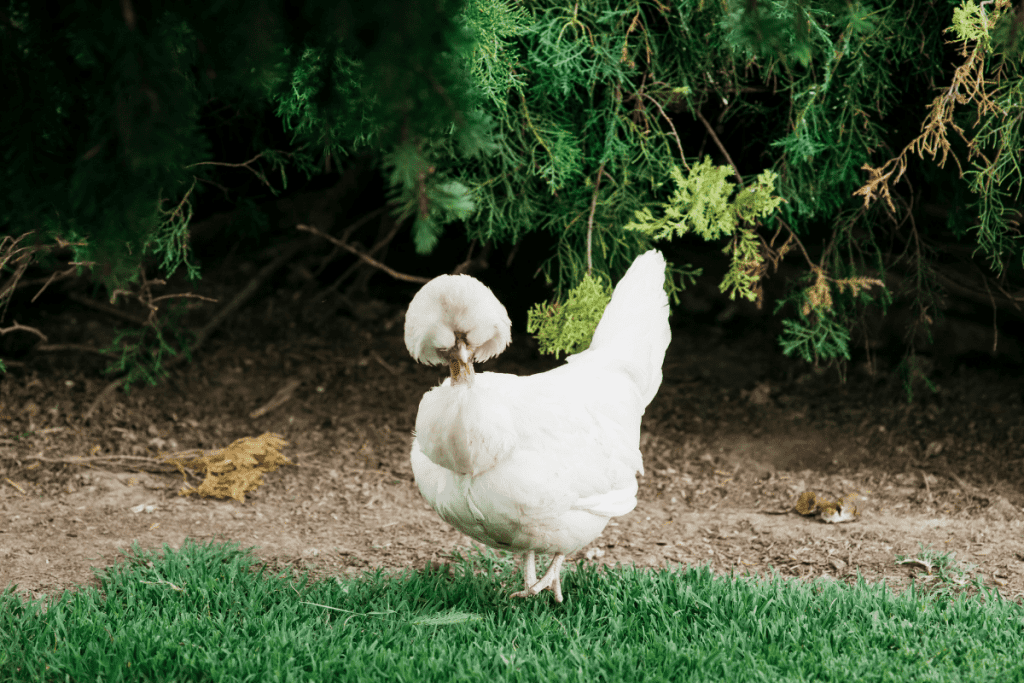
Sultan chickens are another breed certain to stand out amongst any flock thanks to their huge, fluffy crests atop their heads, tall, proud posture, and heavily feathered legs and feet.
These popular show birds originated in Turkey in the 1800s.
They were exported to the UK for the first time in 1854.
By the 1860s, it had made its way to the Americas.
Aside from its strangely adorable plumage, another amusing trait of the Sultan chicken is its prominent, V-shaped comb, which makes the bird appear to have little red horns!
Despite their devilish appearance, these stunning chickens are friendly, outgoing, and talkative.
One thing to note about the Sultan is it is a somewhat high-maintenance breed.
Its thin comb is prone to frostbite and injury, and its heavily feathered feet become dirty very easily.
Sultans’ foot and leg feathers must be inspected and cleaned often to prevent bacterial and fungal infections.
Due to their bizarre appearance, small size, and docile nature, Sultan chickens are also occasionally bullied by larger chickens.
If you don’t mind putting extra effort into keeping your flock looking and feeling great, a Sultan (or a few!) is a great chicken to toss into the mix, especially if your birds are all of a similarly small size.
As a full-sized breed, they are at the larger end of the spectrum on this list, ranging from around 3 to 6 pounds, but they also exist in a bantam variety, which by comparison typically maxes out at about 2 pounds.
Japanese Bantam

We close out this list of small, cute chickens with the Japanese bantam, the Chabo breed.
Aside from their small size, these true bantams are known for their short legs and tall, upright tail feathers.
Interestingly, it is very common for Japanese bantams’ tail feathers to grow several inches taller than the birds’ heads!
The origin of this bantam chicken breed is not well documented and thus largely unknown.
However, we know it was created thanks to selective breeding rather than a chance genetic mutation!
What’s more, the birds have been depicted in various pieces of Japanese art dating back to the 17th century.
The breed eventually was exported to Europe and the US sometime in the mid-1800s.
Japanese bantams are small and short in stature, weighing barely more than a pound and standing only 5″ inches tall.
Although roosters are occasionally territorial, the breed overall is easygoing, friendly, and intelligent.
Today, Japanese bantams exist in over 40 color variants, ranging from solid black, brown, and grey to more complex and visually interesting patterns like cuckoo, tri-colored, red mottled, and black-tailed white.
They are, however, somewhat difficult to breed due to their unusual genetic makeup, which often makes them a bit more pricey to obtain for backyard coops than more common chicken breeds.
Check out some of these Japanese chickens with long tails.
How useful was this post?
Click on a star to rate it!
We are sorry that this post was not useful for you!
Let us improve this post!
Tell us how we can improve this post?
